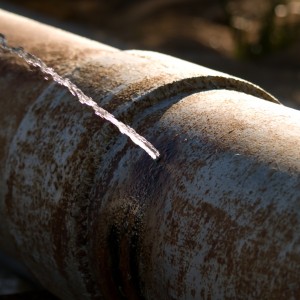
Slow drains
If your home regularly experiences slow draining and clogs, an in-line sewer inspection is highly recommended. A camera inspection can easily detect grease buildup, invasive tree roots, and foreign objects such as cans, bottles, sticks, and rocks, which might be causing a blockage in your drainage system. In fact, sometimes the camera pushing through a soft clog can help to clear the blockage altogether.
Tree roots
Tree roots do more than cause slow drainage in your plumbing system. They can also cause major cracks in your plumbing system, even splitting lines completely. An in-line inspection can determine if tree roots are in fact wreaking havoc on your home’s drainage system.
Slipped joints
A slipped joint in your home’s drainage system could cause a major backup in your home’s drainage system, making for slow draining in sinks and restricted water flow throughout the system.
Collapsed lines
Collapsed sewer lines are commonly caused by invading tree roots, offset pipe joints, or aging pipes, and an in-line inspection will help to both make certain that this is the issue and to identify the exact location of the collapsed line.
Bellies
A belly is a low spot or sag in a sewer line, and this can occur when plumbing is not bedded properly upon installation. A belly can lead to soft blockages that need to be cleared with a manual sewer auger.
Lost valuables
Sometimes a valuable item such as a ring might inadvertently be lost to your home’s drainage system, and an in-line inspection can be used to located it.
Line locating
A contractor can benefit from knowing where a home’s drainage lines are in order to tie into a line, and line locating could save thousands of dollars in excavating fees.